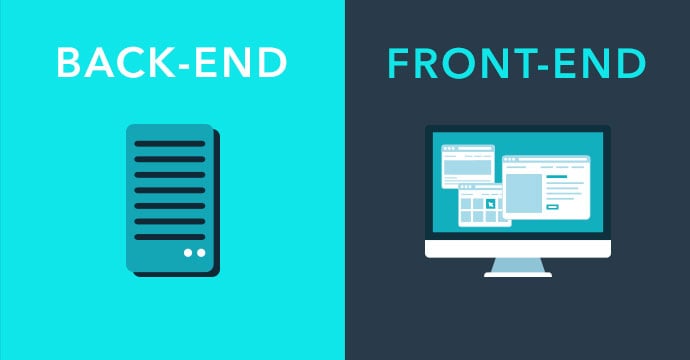What is Backend?
The terms "front-end" and "back-end' are used to characterize program interfaces and services relative to the initial user of the above-mentioned interfaces and services. The "user" shouldn't necessarily be a human being. It may be a program.
A "front-end" application is an application users interact with directly, while a "back-end" application or program serves indirectly to support the front-end services. It is usually closer to the required resource or has the capability to communicate with the required resource.
The back-end application may directly interact with the front-end one. But more typically a program is called from an intermediate program that mediates front-end and back-end activities.
For example, the TAPI (Telephony Application Program Interface) is often referred to as a front-end interface for telephone services. A program's TAPI requests are mapped by Microsoft's TAPI Dynamic Link Library programs, which are intermediate set of programs, to a "back-end" program or driver. "Back-end" program or driver makes more detailed series of requests to the computer telephone hardware.
Here is another example. A front-end application might interface directly with users and forward requests to a back-end program that is located remotely in another computer to get requested data or perform a requested service. If we will view this in relation to the client/server computing model, a front-end is likely to be a client and a back-end is likely to be a server.
As a rule, the backend consists of the following parts: a server, an application, and a database. Supposing you book a flight or buy concert tickets... What do you usually do? You enter a website and interact with the frontend. Once you’ve entered the required information, the application stores it in a database that was created on a server. To put it simply, just imagine a database as a giant Excel spreadsheet on your computer, but your computer (server) is stored somewhere far away, say, in Arizona.
All of that information stays on the server, that's why all of the information is still there in your account when you log back into the application to print your tickets.
A backend developer is a person who builds all of this technology to work together. Backend technologies are most likely to consist of languages like PHP, Ruby, Python, etc. They’re usually enhanced by frameworks like Ruby on Rails, Cake PHP, and Code Igniter to make them even easier to use. All that make development faster and easier to collaborate on.
Whether you are an experienced web developer or just a newbie, most probably, you have already heard a lot of people talking about WordPress. WordPress is a superb example of the frontend and backend working together because it is an open-sourced framework built on PHP and you have to install the platform on your server with a database. Then designers customize the look and functionality of WordPress sites using CSS, jQuery, and JavaScript.
Related terms: infrastructure (IT infrastructure) - the foundation or framework supporting a system or organization, motherboard - the main printed computer circuit board (PCB), power cycling - the process of turning hardware off and on again.
References and further reading:
- Back end - Wikipedia.
- Intro to Backend | Udacity - this course includes an overview of a variety of Web backend topics: from handling user input to building systems with secure user accounts.
- I Don’t Speak Your Language: Frontend vs. Backend - a quick overview of tech terms.
- What's the Difference Between the Front-End and Back-End?
- Overview of Backends API for Java.
- Sam Newman - Backends For Frontends.
- What is Backend as a Service? | Backend as a Service Platform.
